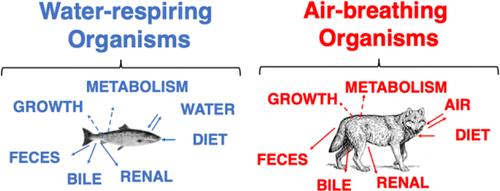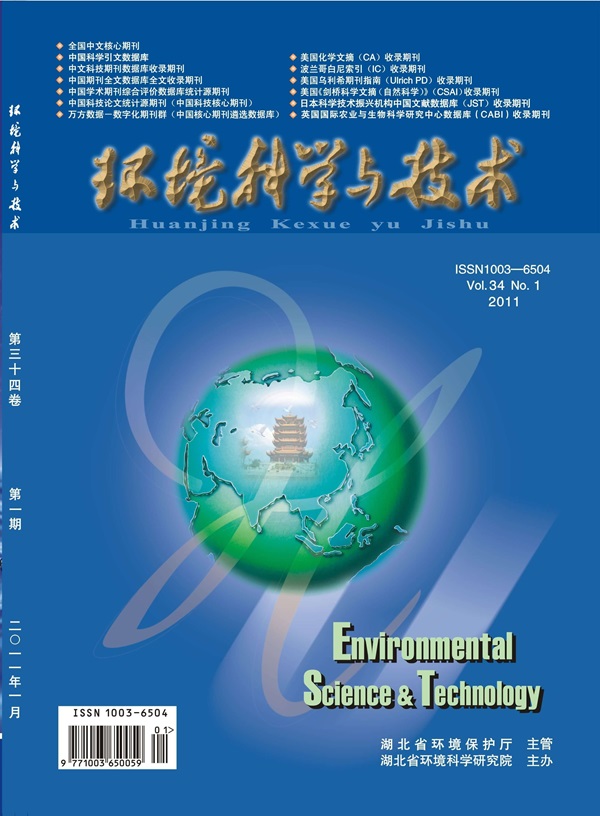Development and Evaluation of Aquatic and Terrestrial Food Web Bioaccumulation Models for Per- and Polyfluoroalkyl Substances
IF 10.8
1区 环境科学与生态学
Q1 ENGINEERING, ENVIRONMENTAL
引用次数: 0
Abstract
There is a need for reliable models to predict the food web bioaccumulation and assess ecological and human health risks of per- and polyfluoroalkyl substances (PFAS). This present study presents (i) the development of novel mechanistic aquatic and terrestrial food web bioaccumulation models for PFAS and (ii) an evaluation of model performance using available laboratory and field data. Model predictions of laboratory-measured bioconcentration factors and field-based bioaccumulation factors of PFAS in fish were in good agreement with observed data as measured by the mean model bias (MB), representing systematic over- or under-estimation and the standard deviation of the MB, representing general uncertainty. The models provide a mechanistic framework for evaluating the combined effect of simultaneously occurring uptake and elimination processes and indicate food web-specific magnification of PFAS, with the highest degree of biomagnification occurring in food webs composed of air-breathing wildlife. Albumin-water, structural protein–water, membrane-water distribution coefficients, and renal clearance rate are among the most important model parameters. With further development and testing, these models may be useful for future PFAS screening and risk assessment initiatives and advance bioaccumulation studies of PFAS by providing a mechanistic framework for PFAS bioaccumulation.

全氟和多氟烷基物质水生和陆生食物网生物累积模型的开发与评估
需要可靠的模型来预测食物网生物累积性,并评估全氟烷基和多氟烷基物质 (PFAS) 的生态和人类健康风险。本研究介绍了(i)针对 PFAS 开发的新型水生和陆生食物网生物累积机理模型,以及(ii)利用现有实验室和实地数据对模型性能进行的评估。根据代表系统性高估或低估的平均模型偏差 (MB) 和代表总体不确定性的 MB 标准偏差,对实验室测量的鱼类体内全氟辛烷磺酸生物富集因子和基于实地数据的全氟辛烷磺酸生物累积因子的模型预测结果与观测数据十分吻合。这些模型为评估同时发生的吸收和消除过程的综合效应提供了一个机理框架,并表明全氟辛烷磺酸会在特定食物网中放大,在由呼吸空气的野生动物组成的食物网中发生的生物放大程度最高。白蛋白-水、结构蛋白-水、膜-水分布系数和肾清除率是最重要的模型参数。通过进一步开发和测试,这些模型可用于未来的全氟辛烷磺酸筛选和风险评估活动,并通过提供全氟辛烷磺酸生物累积的机理框架,推进全氟辛烷磺酸的生物累积研究。
本文章由计算机程序翻译,如有差异,请以英文原文为准。
求助全文
约1分钟内获得全文
求助全文
来源期刊

环境科学与技术
环境科学-工程:环境
CiteScore
17.50
自引率
9.60%
发文量
12359
审稿时长
2.8 months
期刊介绍:
Environmental Science & Technology (ES&T) is a co-sponsored academic and technical magazine by the Hubei Provincial Environmental Protection Bureau and the Hubei Provincial Academy of Environmental Sciences.
Environmental Science & Technology (ES&T) holds the status of Chinese core journals, scientific papers source journals of China, Chinese Science Citation Database source journals, and Chinese Academic Journal Comprehensive Evaluation Database source journals. This publication focuses on the academic field of environmental protection, featuring articles related to environmental protection and technical advancements.
 求助内容:
求助内容: 应助结果提醒方式:
应助结果提醒方式:


